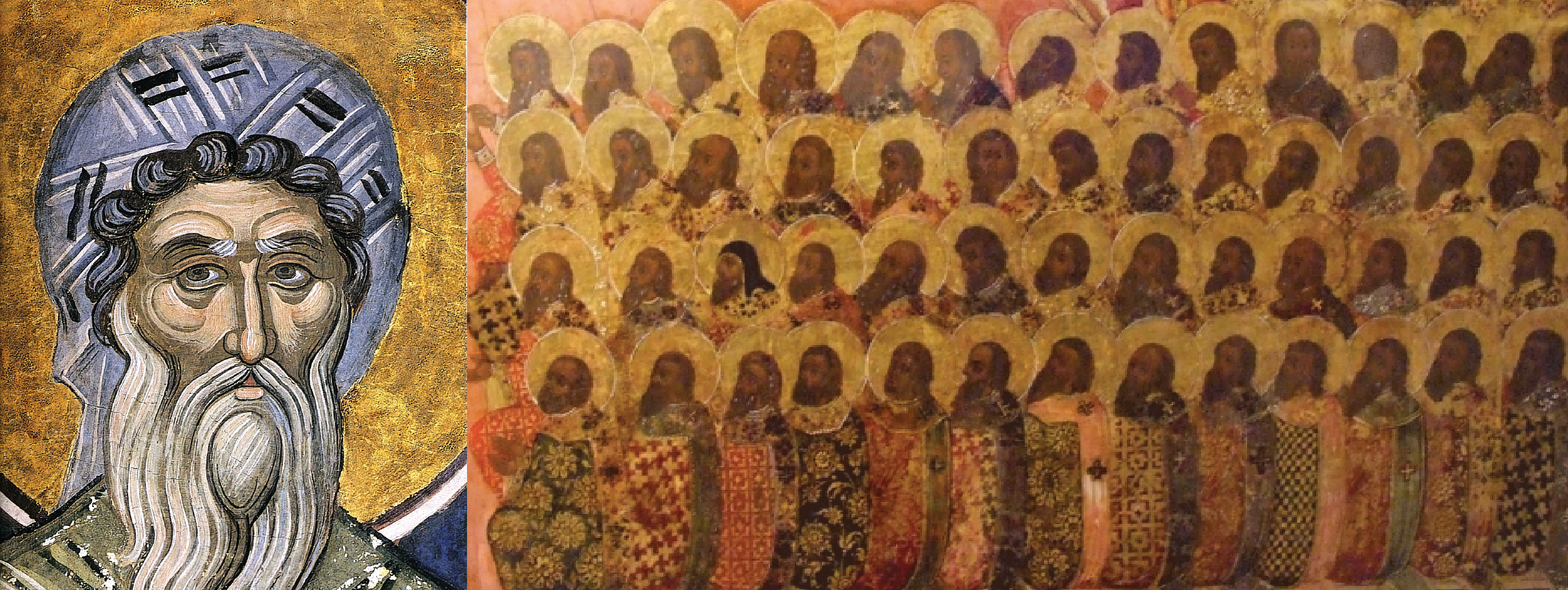Seven Functions of Holy Icons: Number One

Sunday, October 15 Commemorates the Seventh Ecumenical Council at which icons were restored to the Church as a confirmation of the centrality of Christ's Incarnation in Orthodox theology and a necessary aspect of worship. Saint John of Damascus was a key figure in this restoration and in his defense of icons, Apologetic Treatises against those Decrying the Holy Images, he lists seven functions of iconography. Saint John is commemorated On December 4, and so over the next couple months we will present these seven functions and some thoughts we hope will be educational and inspirational, pointing you further towards our Lord and Savior Jesus Christ.
Function 1 according to St John of Damascus:
Icons provide a means of honoring God, His Saints and holy Angels.
Saint Theodore the Studite on images:
The image of Christ is nothing else but Christ, except obviously for the difference of essence, as we have repeatedly proved. It follows that the veneration of the image is veneration of Christ. The material of the image is not venerated at all, but only Christ who has His likeness in it. Those things which have a single likeness obviously also have a single veneration.
- from On the Holy Icons
It is not the icon itself that honors God; the icon provides a means of making this honor, but we are the ones who do the honoring. When we walk into a Church and see these images of Christ and His saints, they afford us the opportunity to stop and acknowledge His saving work in and through the lives depicted. When we see icons of the great events of Christ’s life, we honor the saving work He has done and continues to do for us and for the life of the world. When we see images of His saints, we similarly honor the work He has done in and through them. And by honoring God and His saints this way, we also bring to mind the work He does in our own lives and we can honor Him for that, as well.
When we venerate an icon, we are giving honor to the person depicted in the image. Whether we venerate by bowing and kissing, pausing to reflect on the holiness of the person depicted, or "making eye contact" with the person depicted (such as nodding reverently to the particular writer of the gospel being read in a liturgy), we are using the icon as a means by which we give honor to Christ directly or to Him through one of His saints.
We do this all the time with people we admire. If I have a photo of my grandmother that reminds me of how much I admire her, I treasure that photo, not because of the material it is made of, but because when I look at it, I see her. My heart is stirred and I recall things she said and did that bring me joy and gratitude for the things she taught me. I may even have it displayed in a special frame in a public space in my home so others can see.
It is similar and so much more with icons. One definition of honor is “to show great respect for someone or something, especially in public.” Having icons of Christ and His saints in our churches is obviously a public display of honor, but we do the same thing when we have icons in our homes. We honor the people depicted in the icons as we pray and even while we go about our days. We can honor them even more as we get to know their stories and how they pursued Christ, and when people ask about them, we share the opportunity to honor them with others.
I do not worship matter, I worship the God of matter, who became matter for my sake, and deigned to inhabit matter, who worked out my salvation through matter.
- John of Damascus, from On Holy Images

